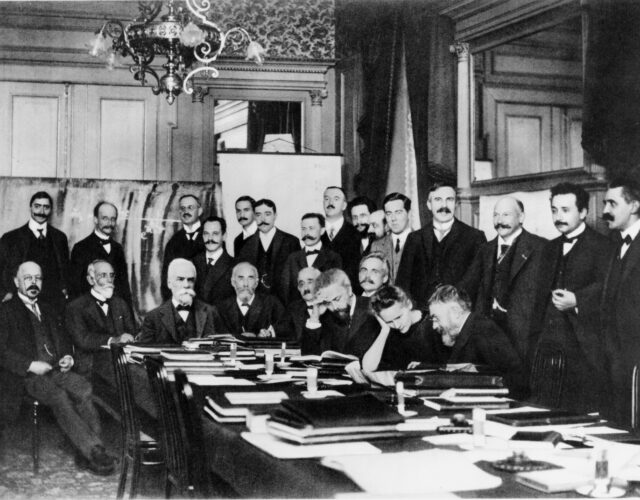Soda ash (sodium carbonate) was and is an important ingredient in everyday life. In the late 1700s the desire for better and cheaper soap, bleached fabric, paper, and, most important, glass propelled a growing demand for sodium carbonate. But the supply of soda ash, made mostly from burned plants and seaweed, could not keep up with demand.
In 1783 the French Royal Academy of Sciences offered a large prize for “the simplest and most economical method” for producing soda ash from common salt (18th-century chemists suspected sea salt contained one of the compounds of soda, a suspicion that wasn’t confirmed until 1807). Nicolas Leblanc proposed the only practical scheme: he reacted salt (sodium chloride) with sulfuric acid to create sodium sulfate and hydrochloric acid, and then added limestone and charcoal to produce calcium sulfide, carbon dioxide, and the much-desired soda ash.
In 1791 Leblanc opened the world’s first soda-ash factory. Unfortunately for Leblanc, France soon found itself at war. All sulfuric acid supplies went toward the war effort, forcing Leblanc’s factory into idleness. In 1794 his still idle plant was seized and his patent suspended. Not until 1801 did he regain the now decrepit factory. A despondent Leblanc, never having seen fame or fortune, committed suicide in 1806.
After 1807 the Leblanc process came into its own. As the number of Leblanc-process plants grew, so did the demand for soda ash, one of the ingredients of the accelerating Industrial Revolution. Balancing supply and demand was a constant struggle. In addition producers faced lawsuits and complaints about the hydrochloric acid released in the first step. They built high chimneys to dissipate the acidic vapor or released it into waterways. The first approach damaged or destroyed plants; the second killed fish. Producers eventually resolved these problems, but the process remained complicated and relatively expensive, and required heavy labor.
It would take a Belgian with little formal education but with tremendous practical knowledge of industrial applications to build a better process. As a young man, Ernest Solvay worked for both his father, a salt refiner, and an uncle, who managed a gasworks. Solvay was put in charge of developing a better way to concentrate ammonia liquor, a by-product of producing gas from coal. As a result he gained a deep appreciation of how products and processes fit together. He noticed that a mixture of ammonia, salt, and carbonic acid would easily turn into sodium bicarbonate and ammonium chloride. The next step was simply to transform sodium bicarbonate into soda ash.
In 1861 Solvay’s first plant began producing soda—and then exploded. He borrowed money from family members to rebuild. Despite equipment breakdowns and problems controlling pressures and temperatures in the early years, by 1869 he had solved his difficulties, and the plant had tripled its production.
Solvay and his brother Alfred made the perfect industrial-financial team. The Solvay family grew immensely rich, as well as philanthropic. They donated money to fund research institutes and universities, as well as a medical and sociological institute. Solvay also used his money to provide social benefits for his workers and schools for their children, a progressive idea in the 19th century.
Solvay, though scientifically uneducated, believed that mass and energy were linked. Albert Einstein’s work and the discoveries of the new physics thrilled him. He was convinced that the end of science was near, that soon all fundamental questions would be answered. Researchers would then move on to the next level—medicine, the life sciences, and, finally, sociology. For Solvay all knowledge—from understanding atoms to understanding society—was integrated.
Despite his other interests, Solvay never forgot chemistry. He wished to create an international institute of chemistry, though chemist Wilhelm Ostwald suggested an international chemical standards bureau instead. In the end Walther Nernst, a physical chemist, persuaded Solvay to fund an invitation-only event where physicists, including Einstein, could talk about the latest discoveries. The first Conseil de Physique Solvay (Solvay Conference), held in 1911, helped shape future research. Attendees included H. A. Lorentz, Marie Curie, Henri Poincaré, Paul Langevin, Ernest Rutherford, and Max Planck.
Solvay had ambitions to be part of science and to act as a catalyst to a science that would answer all questions. He appears in a photo of the first Solvay conference, but looking closer, it’s clear he was patched into the picture—still on the outside, looking in. Yet the man who saw industrial processes, society, and science as part of a greater whole helped shape the esoteric world of quantum mechanics and gave the everyday world cheap glass and paper.




